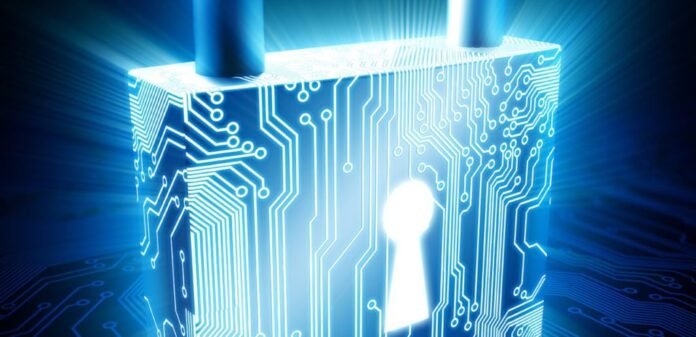[ad_1]
Introduction
The rapid evolution of technology has raised difficult questions about the extent of protection that should be awarded to the computer software and programmes so as to ensure further development as well as adequate safeguard to the person. Although computer programmes are very different from others, yet they are been categorized as literary works under the Copyright Act, 1957.[i] The Foreign Courts have slowly enlarged the extent of copyright protection in software from literal elements to non-literal elements[ii] and further legal doctrines have emerged to ensure that Copyright protection in case of computer software is sufficient.
During the development of Copyright in software, one of the most controversial topics has arisen in case of reverse engineering. The United States Supreme Court explained reverse engineering as a fair means to devise and develop a better version of technology using an already existing technology and working backwards to reach the goal.[iii] There are various compelling reasons for reverse-engineering. Regardless of that reason, it has been a disputable issue because it still infringes the absolute reproduction rights of the owner of copyright in the underlying program.[iv] Reverse-Engineering is an important concept to achieve interoperability which makes it such a controversial topic.
Copyright Protection Extended For Interoperability
Interoperability has been defined as “the ability of computer programs to exchange information, and of such programs mutually to use the information, which has been exchanged.”[v] Achieving interoperability through reverse-engineering can infringe the rights of the original owner. One of the main motives for reverse engineering software is to enable new software products to interact with programs that are already available. Courts have recognised that reverse-engineering is important for public benefit and to encourage inventors and businesses thereby maintaining healthy competition in the market.[vi]
Software reverse engineering involves disassembly (Translation of a program from machine code into a higher-level programming language) or decompilation (produce source code from compiled code) and intermediate copying of the programme which is seen as an infringement of copyright.[vii] The source code of a software is protected while the object code is protected indirectly.[viii] This means that in the very first instance by virtue of reverse-engineering, copyright is infringed as both the source code and object code is copyrightable. However, One of the most crucial decision w.r.t to the copyright protection for Reverse engineering is Sega v. Accolade[ix] in which the US Court was of the view that if the purpose of it is to achieve compatibility, then such usage would be covered under fair use doctrine and would not amount to infringement of copyright.
Software programme contains both elements protected and unprotected. In Computer Associates Int’l Incorporated v. Altai Incorporated[x], US court interpreted and ruled that copyright law does not extend protection to interfaces necessary to interoperability. However, it was later ruled in the case that reverse-engineering for a legitimate purpose would not lead to infringement.
When it comes to software, interoperability is an exception. It is legitimate as it allows new software to function. In that case, there is no need for the person to ask for authorization from the author of the software to obtain the information needed for interoperability.[xi] It is pertinent to note that the third party should have the right to use a copy of the target software.[xii]
The key finding relating to Connectix v. Sony[xiii] was that copying for the purpose of reverse engineering was within fair use. Intermediate copying of programs is a permissible fair use when affected for the purpose of extracting copyright unprotected elements from the otherwise unintelligible electronic object code in which programs are distributed.
Importantly, Copyright Act permits one to defeat technological measures for the sole purpose of analysing the software to achieve interoperability.[xiv] In those cases, such as Google v. Oracle[xv], which use reverse engineering to achieve interoperability, the court was of the view that intermediate copying for the reason of interoperability to be within the purview of fair use.[xvi]
Despite such compelling justifications and case laws to allow reverse-engineering for achieving interoperability, there has been a debate on its legality. There are conflicting views on the topic. The court’s view has shifted from its previous stance in Whelan case[xvii], wherein a high degree of protection was given to copyright owners of computer programme to a less protectionist view. Nonetheless, it certainly upholds the primary purpose of copyright law: to provide additional and higher quality products to the public.
Indian Stance
In India, the answer to this question is not clear especially because the Copyright Act does not define either Decompilation or Interoperability. Section 52(1)(aa) to (ad) of the Copyright Act provides for exceptions in case of computer programme and software. Specifically, Section 52(1)(ab) and (ac) includes the concept of reverse engineering, wherein (ab) talks about doing of an act to obtain necessary information for interoperability where such information is not readily available[xviii] and (ac) allows observation, study or test of functioning in order to determine the ideas and principles of the elements of the programme.[xix] This provision essentially allows for decompiling a computer programme.
The Copyright Act is a public policy statute to ensure that there is a balance between the rights of the Copyright owner and the rights of public along with the technological developments.[xx] The rights of Copyright owners are protected under Chapter IV of the Act, whereas the rights of public as well as technological advancements are protected under Section 52(1)(ab) and (ac) of the Act.
Although it is clear that the objective of enactment of these provisions was to ensure that the principles and techniques in the underlying programme or software does not give the Copyright owner to unnecessarily monopolize those principles, however, without judicial pronouncements, the interpretation of Indian Courts is unknown.
There are also possibilities that the Copyright owner prohibits the use of such techniques of reverse engineering. However, according to the Indian Contract Act, any contract that violates public policy is a void contract.[xxi] In the Vault Corp. v. Quaid Software Ltd[xxii], Louisiana Software License Enforcement Act clause permitting the Copyright owner to restrict or prohibit software decompilation or disassembly was barred by the Copyright Act and therefore was held unenforceable by the US Courts. A similar decision can be expected from Indian Courts if a case arises in future. As discussed, the legislative intent of the enactment of the exceptions to the infringement were to protect public interest, hence it can be interpreted that a contract barring the applicability of such provisions can be held to be void under Section 23 of the Contract Act.
Conclusion The foreign trend, shows that this defence has been accepted and provided to the public in order to establish a balance. If need arise, then Indian Courts would also accept this defence. Thus, it can be concluded that reverse-engineering can be a defence to achieve inter-operability and the Indian Courts
[i] The Copyright Act, 1957, Section 2(o).
[ii] Mann & Susan O, ‘Innovation and Intellectual Property Protection in the Software Industry: An Emerging Role for Patents?’, The University of Chicago Law Review (2004) 71, 252.
[iii] Kewanee Oil Corporation v. Bicron Corporation (1974) USSC 86.
[iv] Abbott & John, ‘Reverse Engineering of Software: Copyright and Interoperability’, Journal of Law, Information and Science (2003).
[v] Digital Millennium Copyright Act, 1988, Section 120(1)(f)(4).
[vi] Bonito Boats Incorporated v. Thunder Craft Boats Incorporated 489 U.S. 141 (1989).
[vii] Lewis, ‘Reverse Engineering of Software: An Assessment of the Legality of Intermediate Copying’, 20 Loy. L.A. Ent. L. Rev. 561 [2000].
[viii] Bainbriage I. David, ‘Computer and The Law’, 1st ed., Pitman Publishing (1990) PL 18.
[ix] Sega Enterprises Ltd. v. Accolade, 977 F. 2d 1510 (9th Cir. 1992).
[x] Computer Associates v. Altai, 119 A.L.R. Fed. 741.
[xi] S. Carran Daughtrey, ‘Reverse Engineering of Software for Interoperability and Analysis’, 47 Vanderbilt Law Review (1994) PL. 145.
[xii] Id.
[xiii] Sony v. Connectix, 203 F.3d 596 (9th Cir. 2000).
[xiv] The Copyright Act, 1957, Sec. 52(1)(ab).
[xv] Google v. Oracle 750 F.3d 1381.
[xvi] Id.
[xvii] Whelan Assocs., Inc. v. Jaslow Dental Laboratory, Inc. 609 F. Supp. 1307.
[xviii] The Copyright Act. 1957, Section 52(1)(ab)
[xix] The Copyright Act, 1957 Section 52(1)(ac)
[xx] Danilo Mandic, Balance: ‘Resolving the Conundrum between Copyright and Technology’, WIPO Working Paper (2011).
[xxi] Indian Contract Act, 1872, Section 23.
[xxii] Vault Corporation v Quaid Software Ltd. 847 F.2d 255 (5th Cir. 1988).
This article is written by Ayushi Bhutra of MNLU, Nagpur.
Disclaimer: This article is an original submission of the Author. Kindly refer to our Terms of use or write to us in case of any concerns. Image used is for representational purposes only. This article is purely for academic purposes & nothing herein shall be construed as professional legal advice.
[ad_2]
Source link


